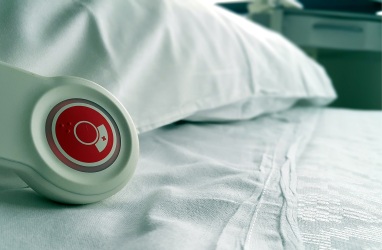New Approaches to “Aggressive” Migraine Treatment
Migraine symptoms are sometimes “endured” for months or years without serious focus on treatment. Many people are being told that migraine is “normal” and that they just have to “put up with it” and “take an aspirin” (not that aspirin is always a bad idea).

There are other patients who have tried many treatments, and are still, or now, experiencing several headaches a week, or almost constant migraine symptoms. And so “aggressive” treatments are finally tried.
One such aggressive treatment is used for children and teens as well as adults who haven’t responded to many of the most effective drug or even surgical treatments. It’s intravenous dihydroergotamine (DHE) therapy.
This is a serious, aggressive therapy because it generally involves hospitalization. Patients are given DHE every few hours (perhaps 3 times a day).
Results of this kind of treatment have been quite positive. Not only are many patients much better or even headache free at the end of the treatment, the improvement is often sustained for many months afterwards. (A couple of quick examples – see Repetitive intravenous dihydroergotamine as therapy for intractable migraine. and Inpatient treatment of status migraine with dihydroergotamine in children and adolescents.)
In spite of the positive results, one of the biggest drawbacks to this treatment is that full hospitalization is very expensive.
But trying to take the treatment to the next level, some specialists in Kansas City are using what they call the “Comprehensive Aggressive Migraine Protocol”, or CAMP. This is a 5 day treatment protocol for 11-18 year old patients. CAMP aims to make two major improvements:
- This is “outpatient” treatment, so full hospitalization is not required.
- Instead of full focus on DHE, the DHE treatment is combined with other treatments, such as massage therapy, relaxation training, and aromatherapy.
This type of treatment may not only save money, but also save on the extra stress of full hospitalization, as well as the possible stress of having the full focus on the intravenous DHE treatments. Also , it helps the patents take control of their condition by learning techniques that they can use at home in the months ahead. Finally, it brings a number of treatments together, which could mean better long-term success.
CAMP was the focus of a recent study, and here are the results
On average, headache intensity declined by 58% over 5 days of treatment (P<.01). Headache frequency decreased by a mean of 1.5 days per week (p=.01) through 3-month follow-up, with a 27% reduction in the proportion of patients reporting a continuous headache (p<.01). There also was an average reduction of 76% in school days missed per month (p<.01) and significant reductions in indices of healthcare utilization (healthcare provider calls and ED visits) (p<.01).
Enhancing outpatient infusion with interdisciplinary care to manage refractory pediatric migraine: Preliminary outcomes from “CAMP” (the Comprehensive Aggressive Migraine Protocol) (P3.10-016)
One statistic alone – the 76% decrease in missed school days – should get our attention. That’s pretty significant.
Sometimes migraine does require “aggressive” treatment. This study reminds us that there are times when we should consciously take time out of “normal life” to really focus on serious treatment, because the benefits for ourselves and those we love in the months and years ahead can be very significant.
Aggressive treatment may take many forms, and one way specialists can help is by giving options to migraine patients – protocols of well-researched and carefully planned treatments, that can break the cycle of migraine symptoms.
Learn more about Dr. Jennifer Bikel, the study’s lead author, here. Read more about DHE treatment in general here.
